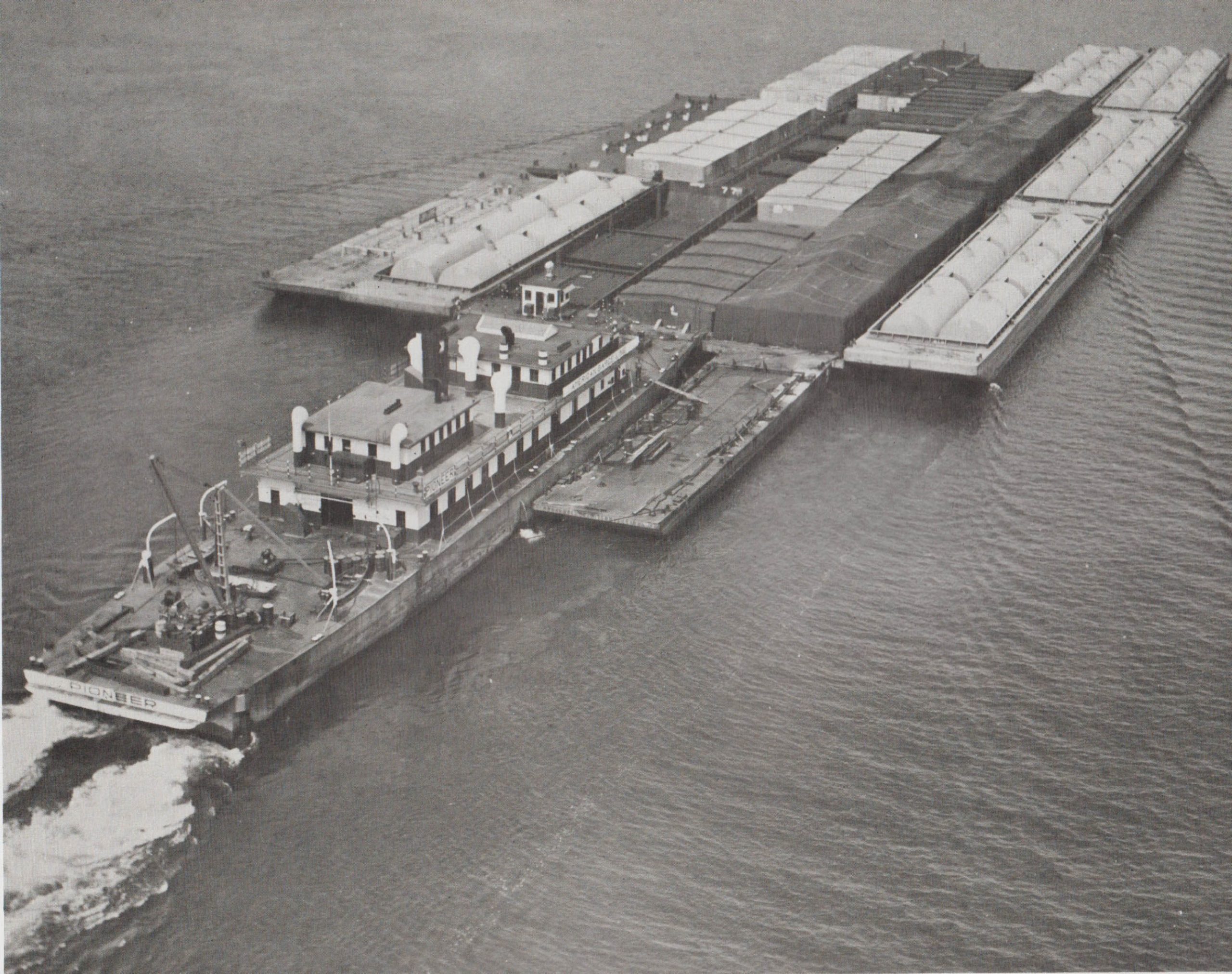One of the oddest towboats ever to grace the Mississippi River system was a vessel named Pioneer. Not the Dravo-built, single screw of 1934 (The Waterways Journal, March 23, 2022) that was the first U.S. vessel with a kort nozzle, but a behemoth that was owned by American Barge Line (ABL) in the 1930s and 40s.
The big boat began life as a railroad transfer ferry built at Bath, Maine, in 1909 for the Portland-based Maine Central Railroad. Named Ferdinando Gorges, it had a steel hull 240 by 47.4 by 15.7 feet and was of steam sidewheel propulsion, rated at 2,000 hp. In the late 1920s, it was sold to the Hudson River Navigation Co. of New York, renamed Pioneer and operated on the Hudson River. In 1933, it was running at Cape Charles, Va.
So, how did such an ungainly craft become a towboat on the Mississippi system? In 1934, it was sold to ABL, Louisville, Ky., and brought around. How this all came about is detailed somewhat in a letter written in 1974 from the late Capt. C.W. Stoll to Capt. Fred Way, then the editor of the S&D Reflector. Stoll had been aboard the big sidewheeler soon after it had arrived at Louisville in 1934 but had long wondered how this had come about as well.
Capt. Stoll checked with several retired or former ABL executives that were still in the Louisville area in 1974. These included Patrick Calhoun, Capt. Jack D. Wofford and Robert F. Brandt. Calhoun had been one of the founders of ABL. Wofford had been a master of the Pioneer, and Brandt had been a chief of engineering at the firm. All three of these men had towboats named for them.
Capt. Stoll’s conclusion of the matter was that the purchase of the big steam sidewheeler came about because it was a bargain and that ABL had done some “high-powered financing” with a New York bank that had a financial interest in the Pioneer. This financial institution had made it “attractive or prudent” for ABL to use the boat. The decision was made to try and tow with it as it was. However, this did not work at all. Very shortly, the boat went back to the bank for conversion into a twin prop diesel craft.
When it first appeared at Louisville in 1934, it looked for all the world like a Civil War gunboat. Atop the high hull was a vacant space surmounted by two decks of cabins and a very small pilothouse. There were two tall stacks that stood abreast aft of the cabins. Tow knees were built down from the high hull, and deck crews would have to use ladders to access loaded barges. Vast changes were made during the conversion.
The Pioneer was repowered with a pair of McIntosh & Seymour direct reversing eight-cylinder 17½ by 25 diesel engines that turned 250 rpm and provided a total of 2,000 hp. The big sidewheel paddle boxes were removed, as were the tall stacks. There were now only two tiers of cabins above the main deck, with a single stack between the forward and aft upper cabins. The small pilothouse, almost an afterthought, remained. Forward, there was a long, open work deck. There was a much longer open deck at the stern. The looks of the boat at this stage prompted the late Dan Owen in the 1995 Fiftieth Anniversary issue of the Inland River Record to state that it was “the most ungainly and ugly boat ever to grace these pages.”
The Pioneer did much better as a river towboat following the conversion to diesel prop, but it was still a poor handler in close quarters due to its sheer size. ABL primarily used it on the Lower Mississippi above Baton Rouge, with other boats turning it. At some point in time, a more proper pilothouse replaced the tiny one, and this helped the looks of the monster, somewhat.
In 1949, the Pioneer was listed for sale by Jeffersonville Boat & Machine Co. (Jeffboat), New Albany, Ind., which was, of course, a subsidiary of ABL. The large ad in the May 21, 1949, issue of the WJ included an array of equipment: barges, engines, other towboats such as the sternwheel steamers James W, Good and Robert F. Brandt, and the diesel-powered tanker-towboat Republic-Pittsburgh.
The Pioneer was last listed in the 1950 edition of the Inland River Record, and in the 1951 book it was shown in the Off The Record section as having been dismantled in 1950. If anyone is aware of what the final disposition of the big hull was, please let us know.




